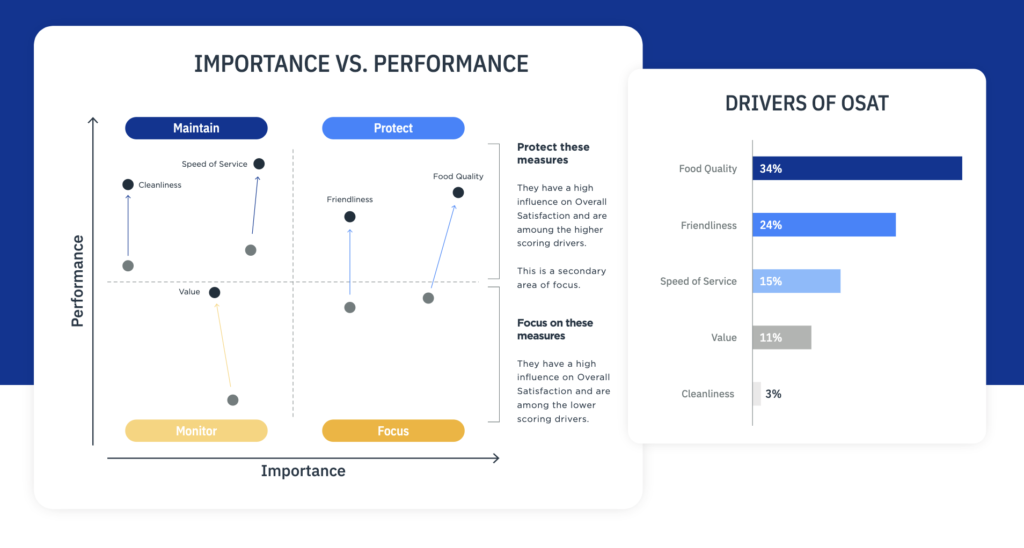
In our recent blog, we discussed how you can improve your customer experience (CX) strategy in five simple steps. Customer experience often relates to the long-term relationship between customers and the companies they do business with. It reflects the summary of experiences at different points along the customer journey—such as considering doing business with a brand, making a purchase and becoming a customer, receiving additional services, having issues resolved, etc—and includes multiple channels: phone, in-person, email, and so on. These various interactions along the customer lifecycle—and, more specifically, those that have the most impact on the business—are what we like to call “Moments That Matter” (MTM) in customer experience.
But are there some moments that matter more than others in the overall customer experience? And if so, how do we assess their importance?
Five Questions to Address
- What Are “Moments That Matter?”
- How Are “Moments That Matter” Determined?
- How Are “Moments That Matter” Measured?
- How Is the Importance of Each “Moment That Matters” assessed?
- Why Does the Technology You Use to Understand These Moments Matter?
Question #1: What Are “Moments That Matter?”
In the past couple of decades, it has become more clear that consumers are after more than just the “product” they purchase. Their choice to support a brand is more than just rational decision-making; it’s about emotions, too. Today’s organizations realize this; so, they try to continuously improve the way in which they deliver those experiences.
For example, many organizations measure call center experiences as a part of their CX program, which is a smart move. Service and support is a key element that defines customer experience, and it frequently generates memorable moments. But is the call center interaction all that matters for the customer?
“Moments That Matter” are the specific interactions—like a particularly superior or terrible call center experience—that trigger customers’ feelings and leave lasting impressions. These are the specific experiences that stand out more than others and impact the customers’ long-term opinions about the organization overall. Additionally, they can likely lead to a make-or-break decision about their future relationship with the organization.
Question #2: How Are “Moments That Matter” Determined?
A key step to identifying the “Moments That Matter” is understanding the customers’ journey throughout their relationship with the organization, from consideration and researching the product or service they need all the way through using said product or service.
Mapping this journey starts with the organization’s knowledge of its key customer touchpoints. Next, customers provide feedback and further input to pinpoints those touchpoints most important to them. They also provide context about their best and worst experiences, wins, and pain points. This mapping helps brands focus on the key “Moments That Matter,” because, in reality, not every touchpoint and every experience is as impactful as others in creating healthy and long-lasting relationships.
Question #3: How Are “Moments That Matter” Measured?
After understanding what “Moments That Matter” are, the next step is to measure the brand’s performance at each of those moments. This is typically done using a survey format that first asks customers to evaluate their overall experience with the company. Then, it should ask which MTMs they have experienced and evaluate those they are familiar with. It may also be effective to rate some MTMs on a battery of actional deep-dive attributes.
Question #4: How Is the Importance of Each “Moment That Matters” Assessed?
There are two general ways to assess the importance of each MTM:
- Ask how important each MTM is (so-called “stated importance”), or
- Mathematically derive importance from each MTM’s ratings and the overall experience with the company (“derived importance”).
Derived importance has an advantage in that it does not require additional questions and simply uses respondents’ evaluation of each MTM they experienced. In general, the rating for each MTM is aligned with the overall experience rating, and the MTM that best follows the overall experience rating is therefore the most important. This type of analysis is called “driver analysis.” At InMoment, we use a technique called True Driver Analysis, which surpasses other approaches in quality of results.
Question #5: Why Does the Approach You Use to Understand These Moments Matter?
Different statistical approaches can be used to conduct a driver analysis and assess the importance of each MTM: correlation analysis, regression analysis, structural equation modeling, and partial least squares, to name a few. The results of these approaches, however, may be biased in the presence of a strong relationship among the MTMs themselves (called “multicollinearity”).
For this reason, InMoment uses True Driver Analysis, which is a technique designed specifically to avoid this type of bias and to assess the “true” relative impact of each MTM on an overall outcome metric. As an output of True Driver Analysis, organizations can identify the key Moments That Matter, focus their efforts, and be able to improve customer experience, loyalty, and ultimately, the bottom line.

With continuous experience improvement being a key enabler of happier customers and long-lasting customer relationships, it is most critical to identify and focus on the Moments That Matter in every experience delivered.
To read more about a proven strategy for continuously improving experiences across your brand in five steps—as well as the brands who have found success with it—check out this article for free today!




